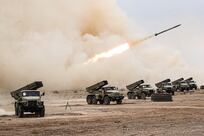It is hard to label 2011 as anything but a tragic year for the NHL and ice hockey in general.
A plane crash in Russia wiped out one of the country's top pro teams, Lokomotiv, killing 44 people. The reverberations were felt throughout the ice hockey world.
Three NHL enforcers died during the summer, either by their own hand or accidentally, and many were quick to make a connection from fighting to head shots to concussions to mental deterioration to the end that befell Derek Boogaard, Rick Rypien and Wade Belak.
There was a riot. A looting, burning, masses-gone-wild riot in Vancouver, after the Canucks lost to the Boston Bruins in Game 7 of the Stanley Cup final.
Vancouver, which also rioted after the Canucks lost in Game 7 of the 1994 Cup final, cleaned up quickly but was left wondering how the 2010 Winter Olympics were so problem-free while the Cup riot seemed inevitable.
And the NHL's concussion crisis continued. But when the face of the NHL, Sidney Crosby, was effectively forced to sit out all of 2011 (save for a handful of games), it pushed the issue to the forefront and led to rule changes aimed at curtailing the crisis.
The league clamped down on hits to the head and was seriously looking at the post-lockout rule changes that eliminated obstruction.
It was not all bad in 2011, of course. The Boston Bruins won their first Stanley Cup in nearly four decades. The Atlanta Thrashers were shut down, but that meant the NHL returned to Winnipeg and the Jets were reborn.
Anaheim power forward Corey Perry was a force in the second half of the season and scored 50 goals en route to winning MVP honours. Daniel Sedin led the league in scoring one year after his twin brother Henrik did the same. Young stars such as Tyler Seguin emerged.
And the Toronto Maple Leafs are in a play-off spot. What could be more encouraging than that?




